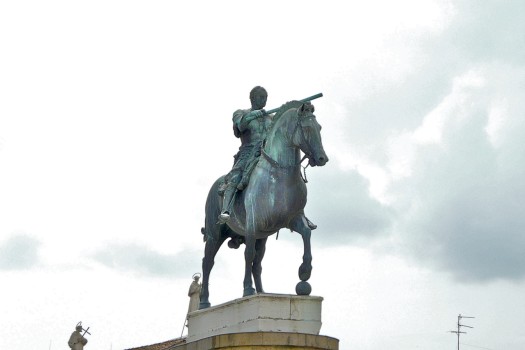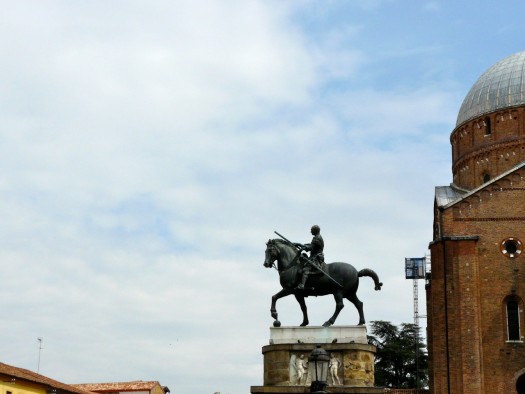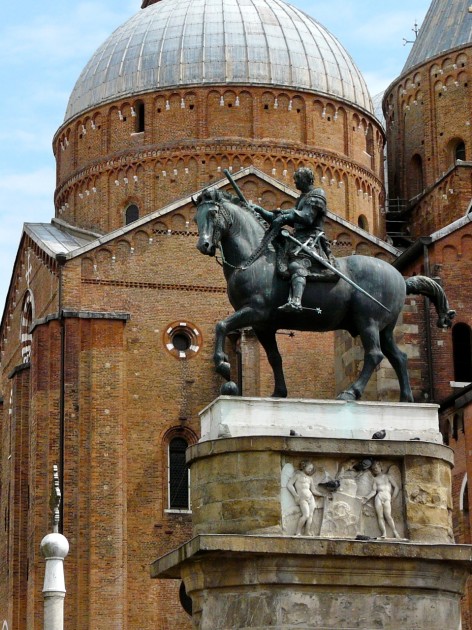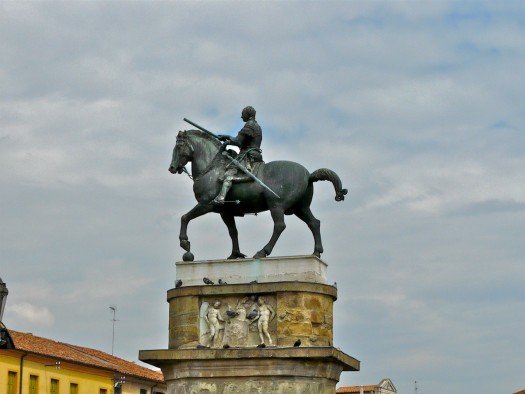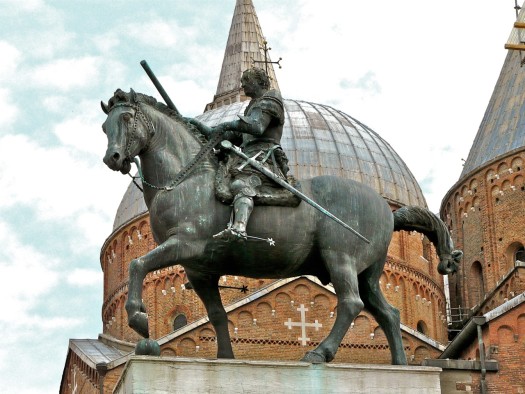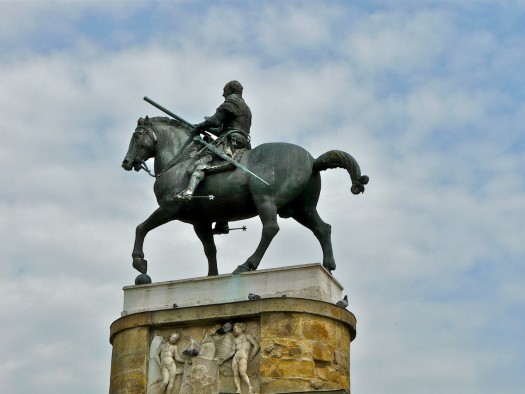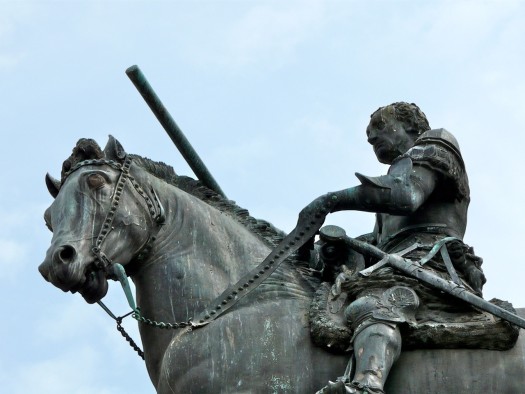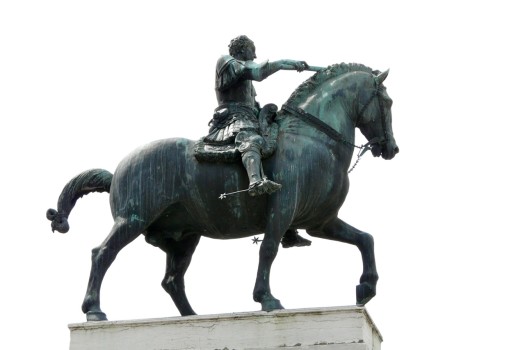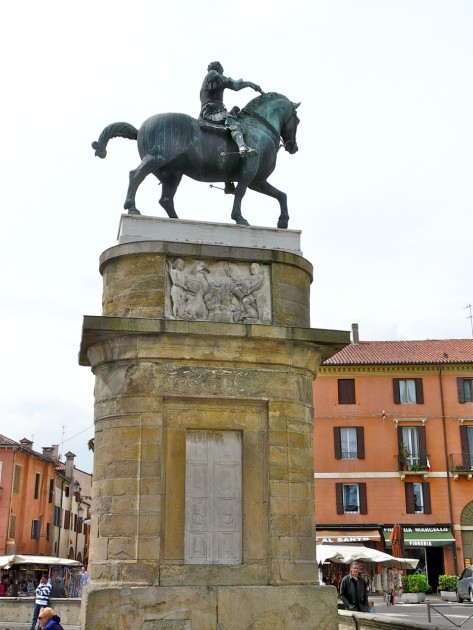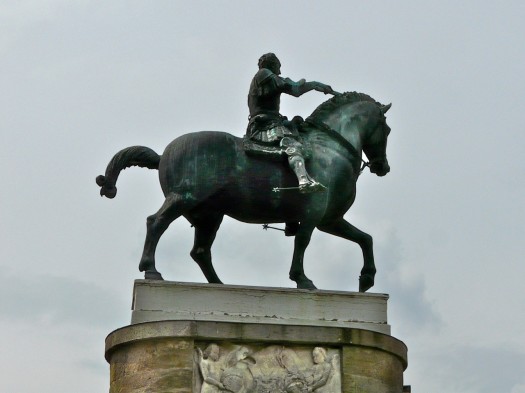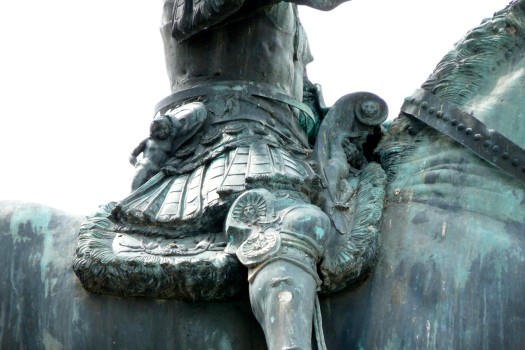The oldest surviving bronze equestrian statue since antiquity is the statue in Padua of the condotierre Erasmo of Narni (1370-1443), better known with his nickname ‘Gattamelatta’ (the honeyed cat). His hair was blonde like honey and he was sly as a cat. Donatello sculpted this statue and finalized it in 1453. The statue was highly controversial at the time of its creation as it was an equestrian monument glorifying a man who was not a ruler. Gattamelata is the first Renaissance equestrian statue reintroducing, after more than a millennium, the grandeur of classical equestrian portraiture. It reflects the artistic trends of the Renaissance: naturalism and the careful depiction of forms.
Undoubtedly the Marcus Aurelius statue inspired Donatello. Instead of portraying Erasmo of Narni larger than life size (the usual way to demonstrate the subject’s power), Donatello makes a statement of the power, by the simple depiction of the real man, a stolid ruler, and a warrior in armour with a lengthy sword upon his waist, commanding a powerful horse. The front left hoof of the horse rests on an orb, symbolizing the earth, so representing his power in the entire world.
The pedestal under Gattamelata is composed of two reliefs toward the top with fake doors underneath. The doors symbolize the gates of the underworld, lending the feeling of a tomb, though the monument was never a burial place. One relief is of da Narni’s coat of arms flanked by two putti (cherubs, or pudgy, infant angels) that are pointing to it. The other relief is of angels displaying battle armor.

